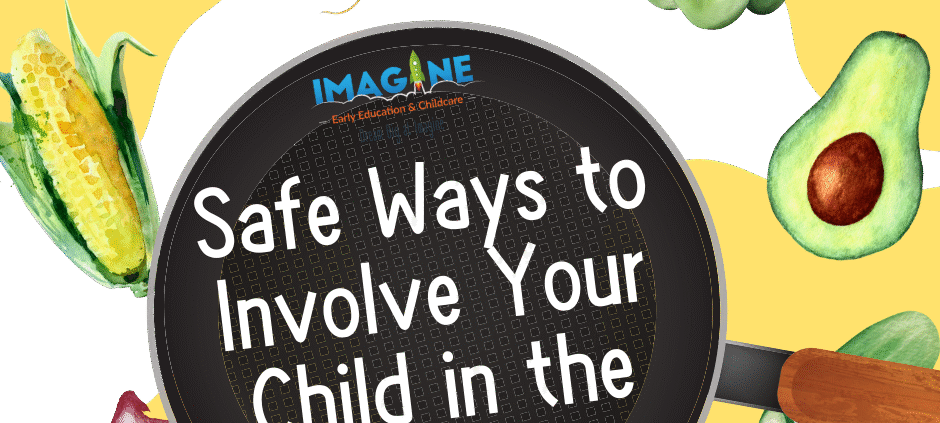Stirring Up Fun: Safe Ways to Involve Your Child in the Kitchen
Cooking with your child is more than just a way to get dinner on the table—it’s a powerful opportunity for learning, bonding, and creating lifelong memories. At Imagine Early Education and Childcare, we love incorporating hands-on activities like cooking to build confidence, spark curiosity, and support early development. With the right guidance and safety measures, even your youngest chef can have a special place in the kitchen!
Why Involve Your Child in Cooking?
Cooking encourages essential life skills and supports your child’s development in multiple ways:
- Math Skills: Measuring, counting, and following sequences.
- Science Exploration: Observing how ingredients change when mixed, heated, or cooled.
- Language Development: Reading recipes and learning new vocabulary.
- Fine Motor Skills: Pouring, mixing, and using utensils.
- Healthy Habits: Developing a positive relationship with food through hands-on exposure.
Safety First: Tips Before You Start
Before inviting your child into the kitchen, here are a few key reminders:
- Always supervise closely—especially around heat, sharp objects, and appliances.
- Choose age-appropriate tasks and explain each step clearly.
- Use child-safe tools whenever possible.
- Keep cleaning supplies, knives, and hot surfaces out of reach.
- Practice hygiene: wash hands before and after handling food.
Age-Appropriate Kitchen Tasks
Toddlers (Ages 1–3):
- Washing fruits and vegetables
- Tearing lettuce or herbs
- Stirring cool ingredients
- Using cookie cutters
- Helping clean up with a soft cloth
Preschoolers (Ages 3–5):
- Measuring dry ingredients
- Pouring pre-measured liquids
- Mixing batter or dough
- Making sandwiches
- Decorating cookies or cupcakes
School-Aged Children (Ages 6+):
- Reading simple recipes
- Cracking eggs (with help)
- Chopping soft items with a child-safe knife
- Operating small appliances under supervision
Fun and Safe Recipe Ideas
Here are a few easy recipes perfect for cooking together:
- Fruit Kabobs: Let kids safely slide cut-up fruit onto skewers for a colorful, healthy snack.
- Mini Pizzas: Provide English muffins, sauce, cheese, and toppings for your child to create their own masterpiece.
- Yogurt Parfaits: Layer yogurt, fruit, and granola in clear cups—great for practicing pouring and patterning.
- No-Bake Energy Bites: Mix oats, nut butter, honey, and add-ins like raisins or chocolate chips, then roll into balls.
Cooking Together Builds More Than Meals
The kitchen can be a joyful classroom full of lessons in teamwork, patience, and pride in a job well done. When you involve your child in preparing meals, you’re helping them build independence and a positive relationship with food—skills that last a lifetime.
At Imagine Early Education and Childcare, we embrace hands-on learning experiences like these every day in our Culinary Enrichment Room and throughout our programs. We love seeing children light up when they learn something new—and we know that families who cook together grow together.



